How to Fix iTunes Doesn’t Recognize iPhone/iPad [10 Ways]
What should you do if you connect your iPhone or iPad to a Windows or Mac, but iTunes doesn’t recognize it? This guide will show you how to get iTunes or Finder to see an iOS or iPadOS device.
Apple manages all of its iOS devices using iTunes (or Finder on Mac running macOS Catalina and later), which includes patching, upgrading, and restoring any software. What if iTunes on Mac fails to recognize your iPhone, iPad, or iPod?
This also appears to be a problem for owners of Windows laptops. When you connect your iPhone or iPad to your computer, no icon displays, and no response. And, you may get the message saying iPhone/iPad not showing up in iTunes, or iPhone is disabled connect to iTunes, but disabled iPhone won’t connect to iTunes, etc.
In this article, we’ll look at some actions to take if your Apple device isn’t responding, as well as how to get iTunes (on Mac and Windows) to see your iOS or iPadOS device.
Why Does my iTunes Not Recognize my iPhone/iPad?
The reason for iTunes does not recognize iPhone are going to be hardware issues or software glitches on your iPhone/computer.
For hardware issues, it is critical to check both your iPhone and your Mac and Windows. To begin, dust and other particles might obstruct device communication, ensure that your ports are free of dust and debris. If yes, clean them before reconnecting them. Also, make sure that the connection wires you’re utilizing are in good working. And, remember to get Apple mobile device support downloaded to help iTunes to recognize your iPhone, iPad, iPod.
If you try this basic tip and the iPhone still won’t connect to the computer, it could be a software issue. In the next part, we’ll go over some of the steps you can take to try to solve the software problem.
How to Fix iPhone/iPad Not Showing Up in iTunes with One-click
If the iPhone/iPad does not appear when connected to Mac/Windows via USB cable, there is an alternative method. You can use AnyFix – iOS System Recovery to get your device showing on Windows PC or Mac.
AnyFix is designed to revive your Apple devices, which can fix 200+ iTunes errors, including iTunes won’t recognize iPhone, iPad disabled cannot connect to iTunes, etc. And, it is also the solution for 130+ iOS/iPadOS/tvOS system issues. If iTunes doesn’t recognize iPhone or iPad because of device system glitches, AnyFix will check and get problems solved. In all, with AnyFix, you can solve iTunes doesn’t recognize iPhone/iPad and get them to show up in iTunes. Windows PC and Mac computer are supported.
Besides, if your iPhone or iPad is freezing, iPhone is stuck on update requested, etc., AnyFix will help you. Now, you can check how does AnyFix work on fixing iPhone/iPad not showing up in iTunes:
AnyFix – Fix iPhone/iPad not Showing up in iTunes
- Fix iTunes doesn’t recognize iPhone/iPad with one click.
- Supports the latest iPhone 13, iPad 9, Windows 11 & macOS Monterey.
- Fix iTunes connection/restore errors with the highest success rate.
- Professional team with 7-year experience & helped 100,000+ users.
Free Download100% Clean & Safe
Free Download100% Clean & Safe
Free Download * 100% Clean & Safe
Once you have downloaded the tool, just follow the steps below to fix the problem.
Step 1. Install the Tool and Choose iTunes Repair
First, launch the tool on your PC, and then tap on iTunes Repair and continue.
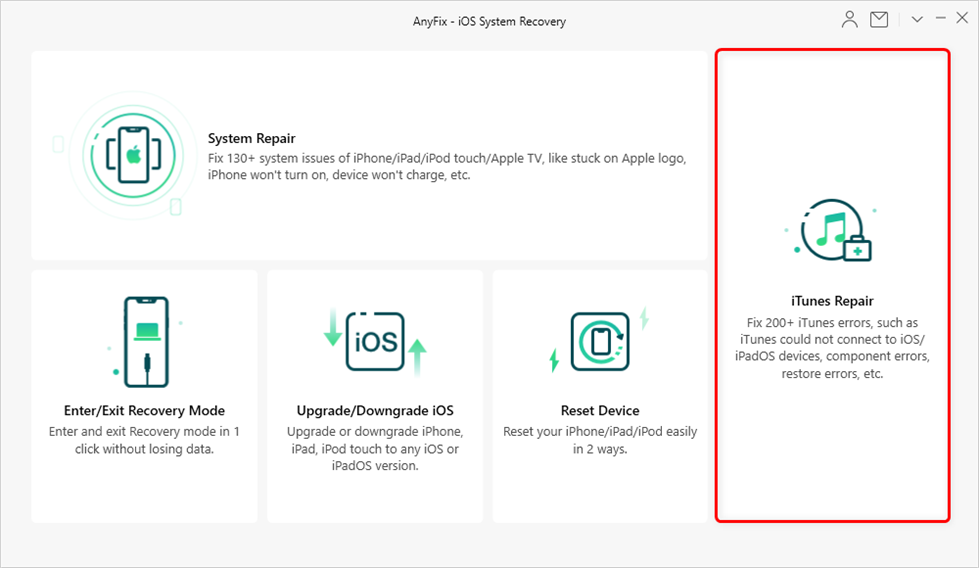
Click iTunes Repair
Step 2. Select iTunes Connection Errors
Now, select iTunes Connection/Backup/Restore Errors and hit on Scan Now.
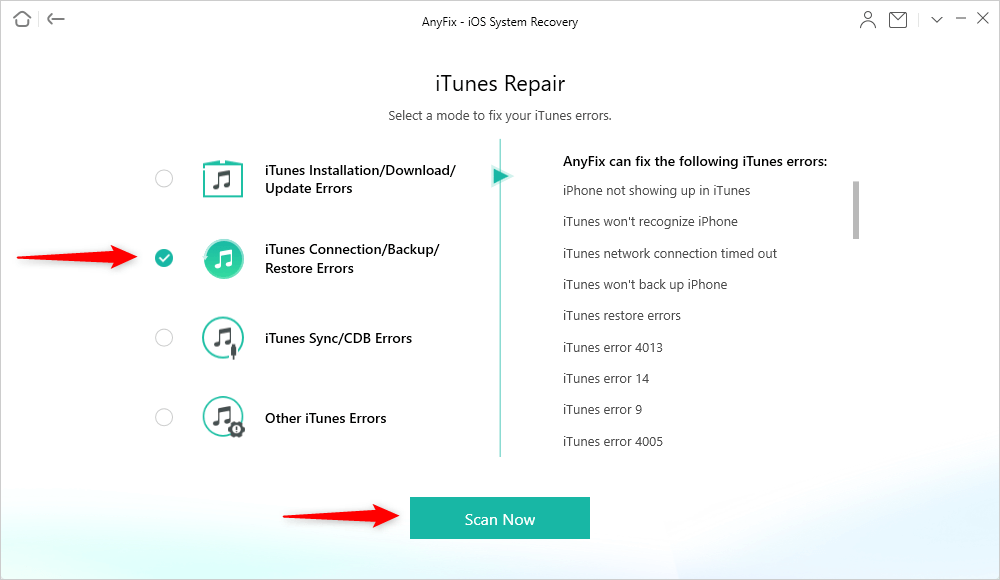
Choose iTunes Connection/Backup/Restore Errors
Step 3. iTunes Errors Detected
Next AnyFix will analyze your iTunes errors and start repairing iTunes components.
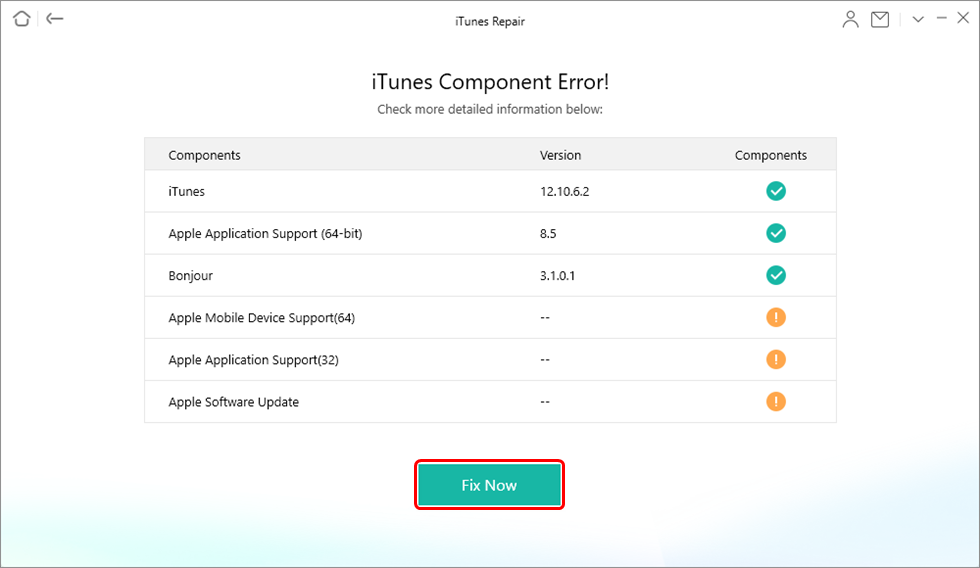
iTunes Component Errors will be Detected
Step 4. Authorize AnyFix to Repair iTunes
Tap on Yes on your computer to authorize AnyFix the administrator rights.
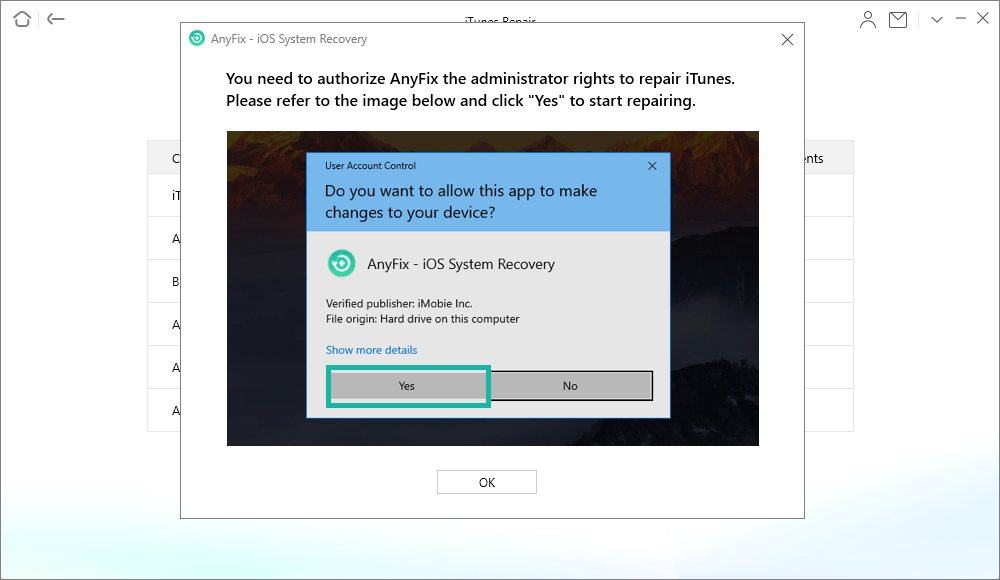
Authorize AnyFix on your Computer
Step 5. iTunes Repair Completed and Connect your iPhone/iPad NOW
Wait a few moments, and you’ll see the completed page. Open iTunes and connect your iPhone or iPad with a USB cable now.

iTunes Repair Completed
- How to Fix iTunes Not Recognizing iPhone/iPad in Recovery Mode >
- How to Unlock a Disabled iPad without iTunes >
Fix iPhone/iPad Not Showing Up in iTunes Windows
When a computer fails to identify your iPhone, iPad, or iPod, it does not always indicate a serious problem. Reasons such as a locked iPhone or an out-of-date iTunes may also result in the iPhone not appearing on PC in Windows 11, or Windows 10/8/7. So, let’s have a look at some of the solutions for fixing the iPhone not connecting to iTunes on a Windows computer.
Fix 1. Try Another USB Port
Remove the iPhone from its current USB port and connect it to a different USB port on your computer. If the problem was caused by a faulty USB port on your computer or a malfunctioning USB HUB, this simple quick fix should work.
Fix 2. Restart iPhone
The next fix is to restart your iPhone as restarting the iPhone aids in the removal of small flaws and software problems that may be causing the issue. To do so:
- First, unplug the iPhone from the computer.
- Now, navigate to Settings, and then click on General and tap on the Shut Down button.
- Wait for 30 seconds, and then try restarting your iPhone again.
After the iPhone restarts, plug it back into the computer and check to see if it is detected in iTunes.
Fix 3. Restart Computer
Your PC may also be plagued with frozen programs and software issues that might be causing iTunes doesn’t recognize iPhone. Here we suggest restarting your computer and trying. To do so:
- Remove your iPhone and any other devices that are plugged into your PC (Except Keyboard and Mouse).
- Now Shut Down the computer and at least wait for 60 seconds and again restart it.
After the computer restarts, launch iTunes and connect the iPhone to the computer’s USB port and see if it works. If not, try the next method.
Further Reading: How to Fix Computer Slows After Windows Update >
Fix 4. Reset Location & Privacy
The next method is to unplug your iPhone from the computer and reset your iPhone’s location and privacy settings. To do so:
Step 1: Go to Settings, and click on General, and hit the Reset button.
Step 2: Once you click on Reset, you will see several options, just tap on Reset Location & Privacy option.
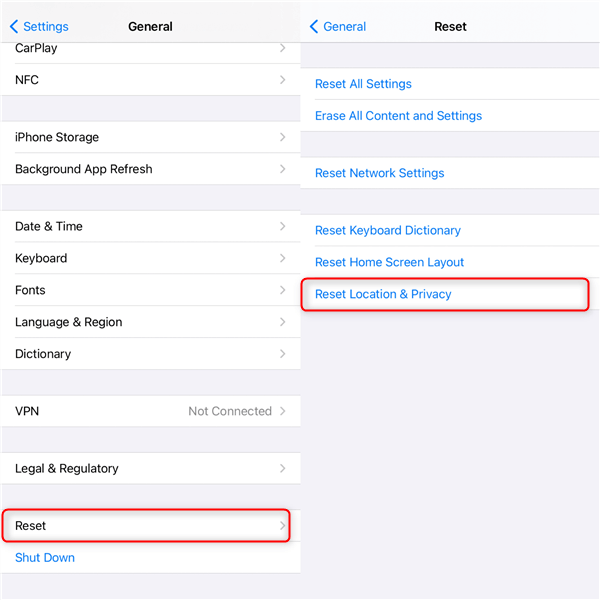
Reset Location & Privacy
Step 3: Once done, plug the iPhone back to the computer via a USB cable.
Step 4: When you connect your iPhone, Trust This Computer will pop up, just tap on the Trust option.
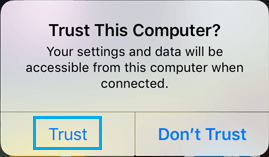
Trust this Computer When iTunes Pops Up to Connect iPhone
Finally, the iPhone should appear in iTunes after you Trust the PC.
Fix 5. Reinstall Apple Mobile Device USB Driver
For a computer to identify your Apple device, you’ll need the Apple Mobile Device USB driver. If your iPhone does not appear on your PC, it is likely that the Apple Mobile Device USB Driver was not successfully or correctly installed on your PC. In this case, you must reinstall the Apple Mobile Device USB program and try again.
Depending on where you downloaded iTunes, the steps to reinstall the Apple Mobile Device USB driver differ.
If you got iTunes via the Microsoft Store, here’s what you need to know:
Step 1: First, reconnect your device to the computer and make sure the device is unlocked.
Step 2: Right-click the Start button and click Device Manager.
Step 3: Click on Portable Devices to expand it and then choose the Update driver.
Step 4: In the next window, click on Search automatically for updated driver software.
Step 5: Finally, once the driver is updated go to iTunes and check if your iPhone is showing up.
Further Reading: How to Fix iTunes Update Not Working on Windows >
If you got iTunes from Apple, follow these steps:
Step 1: Reconnect your iPhone to the computer and unlock it. Close iTunes if it’s running automatically.
Step 2: Now click on Windows + R and enter %ProgramFiles%\Common Files\Apple\Mobile Device Support\Drivers.
Step 3: Now, hit enter and right-click on usbaapl64.inf or usbaapl.inf file and tap Install.
Step 4: Finally, once the software is installed, try reconnecting your iPhone to iTunes and check if it’s working. If not, jump to the last fix.
Fix 6. Check Device Manager
If your iPhone is still not showing up on iTunes, here is the last fix where you check if the driver is properly installed. To do so:
Step 1: First, right-click on the Start button and click on Device Manager.
Step 2: Now expand the Universal Serial Bus controllers and look for Apple Mobile Device USB Driver.
- If you don’t see the driver or notice an Unknown Device, connect your device with another USB cable or connect your iPhone to another computer.
- Restart the Apple Mobile Device Service if there is an error symbol next to the driver.
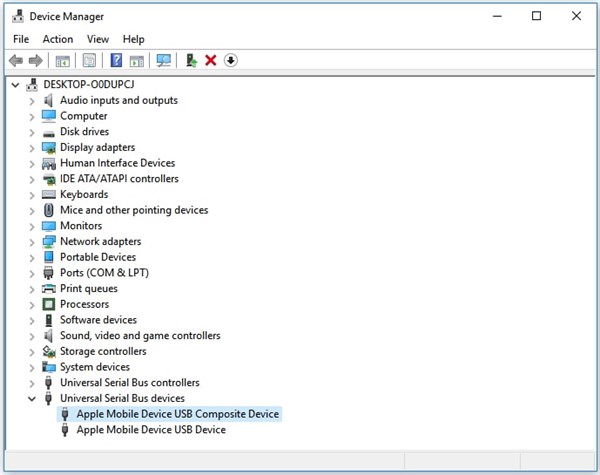
Check Apple Device Driver
If you are still unable to resolve the iPhone not showing up on iTunes, you may need to contact Apple Support.
Fix iPhone/iPad Not Showing Up on iTunes Mac
There are numerous solutions to the “iTunes not connecting to iPhone” issue. Now, let’s look at all of the solutions to the iTunes Could Not Connect to This iPhone on Mac Computer.
Fix 1. Update To The Latest Version of iTunes or Finder
Also, let’s see if there’s an iTunes update available on Mac:
Launch the App Store and navigate to the Updates section at the top of the screen. If an iTunes update is available, click the Update button to the right of it. You won’t see the Update button if your iTunes is up to date.
Fix 2. Update Your Computer’s Software
Computers using older versions of software may have small glitches and issues from time to time. Updating the most recent version of your computer’s software is a quick way to try to resolve the issue.
If you’re using a Mac, click the Apple logo in the upper left corner of the screen. Then navigate to About This Mac and click on Software Update. Click Update if an update is available. If no updates are available, proceed to the next step!
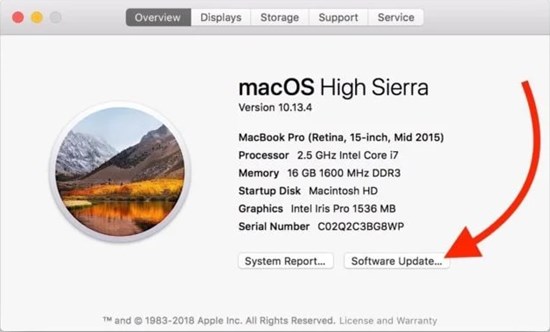
Update macOS
Fix 3. Check Your Mac’s System Information Or System Report
If iTunes still doesn’t identify your iPhone, we have one more software debugging option. We’ll look in your iPhone’s System Information or System Report to determine if your iPhone appears in the USB device tree. To do so:
Step 1: To begin, hold down the Option key while clicking the Apple logo in the upper-left corner of the screen and selecting System Information or System Report. When the pop-up window displays, click System Report if your Mac indicates System Information.
Step 2: Now that you’re at the System Report page, click the USB option on the left side.
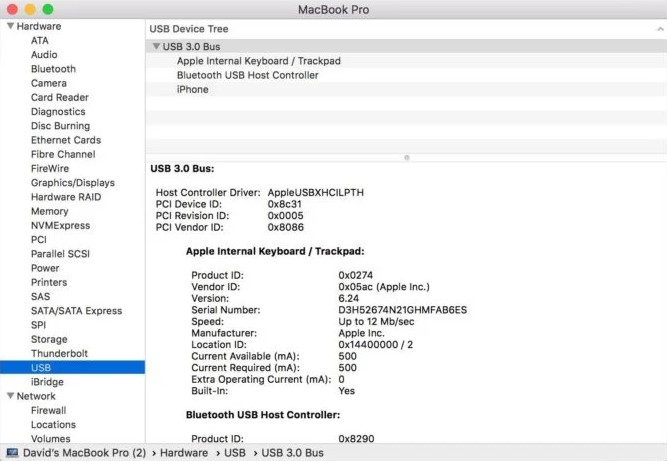
View USB System Report on Mac
If your iPhone does not appear in this menu, there is most likely a hardware problem preventing iTunes from detecting it. To resolve this issue, we recommend visiting an Apple Store.
The Bottom Line
That’s All! Here we have highlighted the possible options to fix iPhone or iPad not showing up in iTunes Windows and Mac. Hope those methods are effective for resolving the problem. We also offer AnyFix – iOS system recovery, which can repair iTunes connection errors, and help if your computer isn’t recognizing your iPhone/iPad due to software issues. Why not try to install the software and connect your iPad to iTunes successfully.
Free Download * 100% Clean & Safe
Please leave a comment if you have any better answers to the iPhone/iPad not showing up on PC issues.
Product-related questions? Contact Our Support Team to Get Quick Solution >

